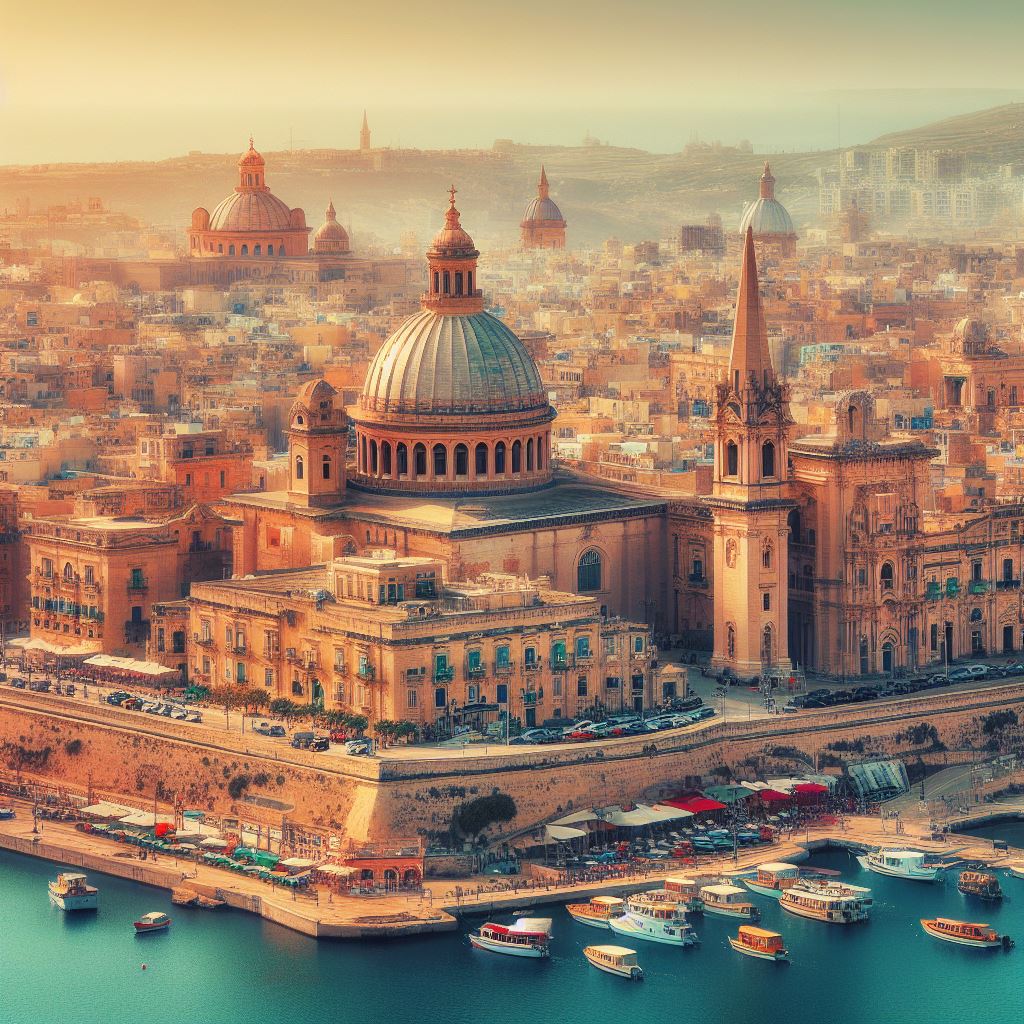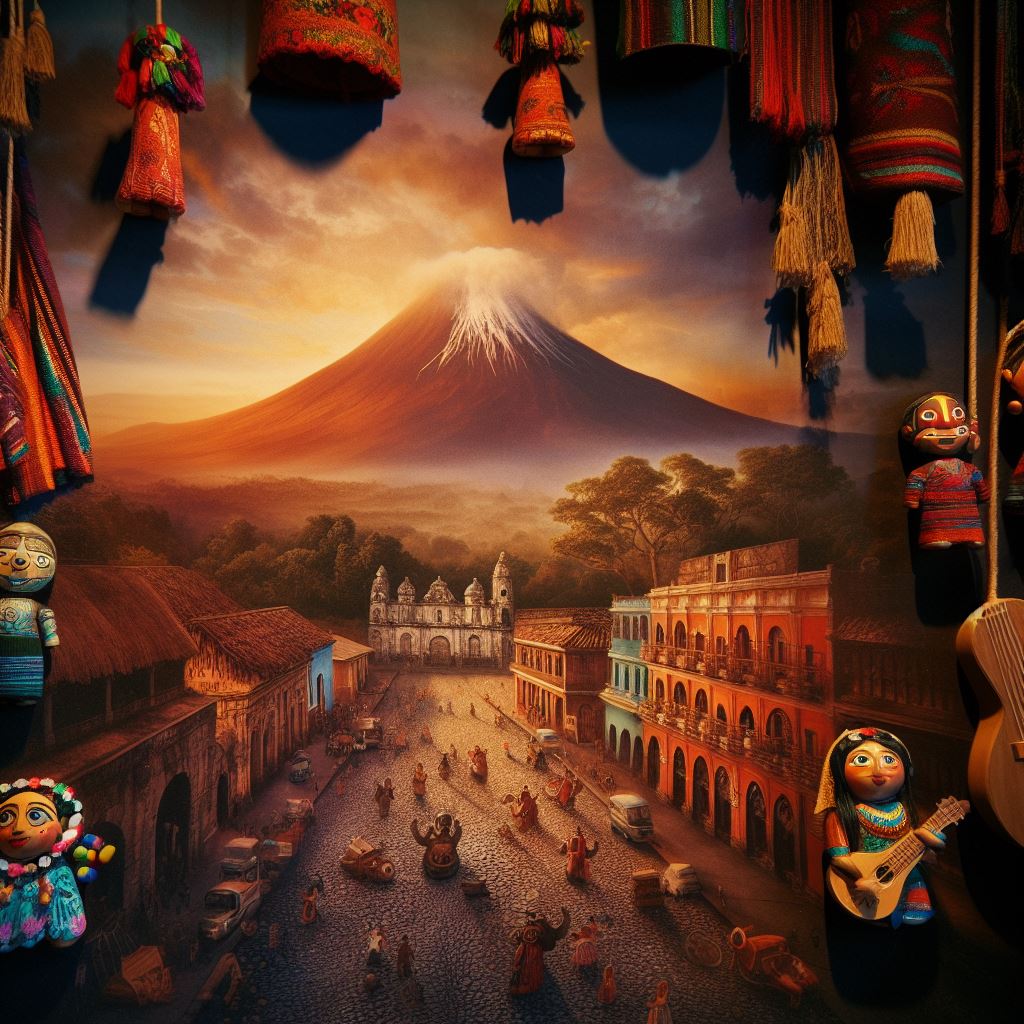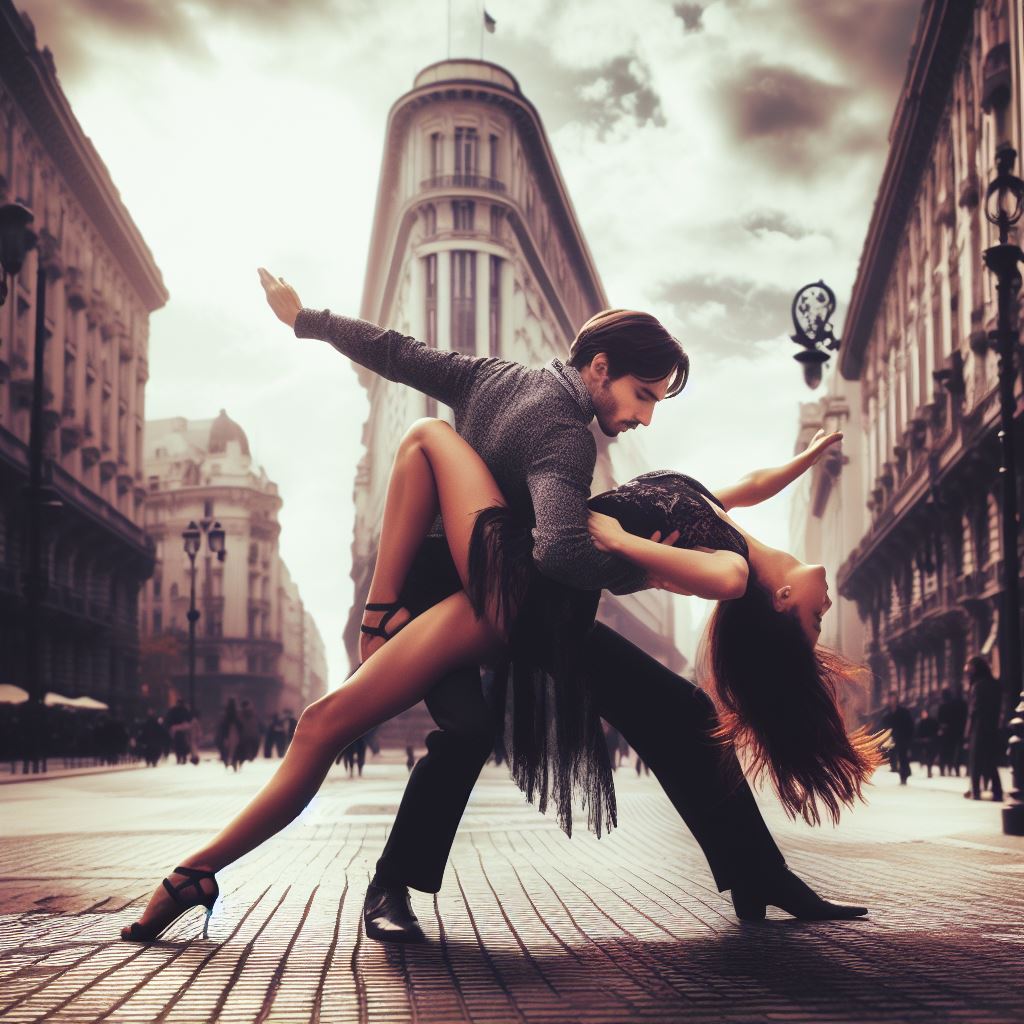Puerto Rico is so much more than just beautiful beaches and ritzy resorts. This vibrant Caribbean island has a rich history and culture all its own.
From its Taíno roots to its Spanish colonial past to its unique status as a U.S. territory, Puerto Rico has a compelling story. The island’s distinctive blend of influences has created traditions and ways of life that make it truly special.
Whether you’re planning a visit to Puerto Rico or just want to know more about this fascinating place, get ready to have your mind blown! Here are over 50 fun facts that will give you insight into Puerto Rico’s intriguing history, nature, people, customs, and more.
History & Culture Fun Facts
Puerto Rico has been shaped by a diverse mix of Indigenous, European, and American influences over the centuries. This section reveals some of the most fascinating historical and cultural facts about the island.
Indigenous Taíno and Pre-Columbian Puerto Rico
- The original inhabitants of Puerto Rico were the Taíno, an Arawak Indian tribe who called the island “Borikén.”
- Before Spanish colonization, the Taíno had a developed society with organized leadership and agricultural practices.
- Women played important roles in Taíno society as healers, priests, doctors, and chiefs.
- The Taíno left behind petroglyphs and artifacts like ceremonial ball courts and idols that give clues about their culture.
Spanish Colony & Influence on Culture
- Juan Ponce de León colonized Puerto Rico for Spain in 1508 after arriving on the island in 1493 with Christopher Columbus.
- As a Spanish colony, Puerto Rico produced lucrative exports like sugar, tobacco, gold, and silver.
- Puerto Rico was an important military outpost for centuries, resulting in many historic forts and walls in San Juan.
- The Spanish brought slavery to the island and blended Taíno culture with Spanish language, Catholicism, food, music, and more.
Becoming a U.S. Territory after Spanish-American War
- In 1898, Spain ceded Puerto Rico to the U.S. after losing the Spanish-American War, ending 400 years of Spanish rule.
- Puerto Ricans were granted U.S. citizenship in 1917, but the island remains an unincorporated U.S. territory.
- Puerto Ricans cannot vote for U.S. President but serve in the military and play a big role in American culture and politics.
- The island’s political status has been widely debated, with no consensus on statehood, independence, or remaining a territory.
Unique Blend of Taíno, Spanish, and American Traditions
- Puerto Rican culture today reflects indigenous, African, Spanish, and American influences blended in a unique way.
- Traditional cuisine uses native crops like yucca along with Spanish and African cooking techniques and ingredients.
- Puerto Rican art, architecture, language, music, festivals, and more show this cultural fusion. The island’s flag represents it well.
Geography & Nature Fun Facts
In addition to its rich culture, Puerto Rico wows visitors with stunning scenery. These geographical facts showcase the diversity of the island’s landscapes and ecosystems.
Location in the Caribbean Sea
- Puerto Rico is the smallest and easternmost of the Greater Antilles islands in the Caribbean Sea.
- The main island of Puerto Rico is 110 miles long and 35 miles wide – about the size of Connecticut.
- With surrounding small islands, Puerto Rico has a land area of 3,515 square miles.
- Its tropical location gives it year-round warm weather, with coastal regions moderated by sea breezes.
Diverse Ecosystems Like Rainforests, Beaches, & Caves
- Puerto Rico has over 246 miles of beautiful coastline with many white sand beaches.
- The island has over 100 different soil types supporting diverse ecosystems and microclimates.
- Lush rainforests like El Yunque National Forest contrast arid areas like Guánica State Forest.
- Caves like the Río Camuy Cave Park contain stalactites, underground rivers, and indigenous petroglyphs.
Endemic Wildlife Like Coqui Frogs & Parrots
- Over 56% of Puerto Rican mammals are endemic like the Puerto Rican hutia rodent.
- Popular endemic birds include the Puerto Rican parrot, Puerto Rican woodpecker, and Puerto Rican tody.
- Coquí frogs are a beloved symbol of Puerto Rico, and their song fills Puerto Rican nights.
- Bioluminescent bays like Mosquito Bay glow an eerie blue due to millions of dinoflagellates.
Cuisine & Drink Fun Facts
Puerto Rican food culture unites its diverse influences into mouthwatering fusion cuisine and legendary local drinks.
Origins of Mofongo, Arroz con Gandules, & Other Dishes
- Mofongo, made of fried and mashed plantains, combines Taíno and African cooking methods.
- Rice and beans dishes like arroz con gandules blend Spanish ingredients with African cooking techniques.
- Pernil, roasted pork shoulder, came from Spanish cuisine while lechon asado was influenced by native cooking.
- Tropical fruits and root vegetables used in Puerto Rican cuisine reflect the island’s agriculture.
Rum Production & Cocktails Like Piña Colada
- Puerto Rico’s rum industry dates back to the 17th century. Bacardi and Don Q are two major local brands.
- The piña colada, Puerto Rico’s national drink, was invented in 1954 at a San Juan bar.
- Puerto Rico also claims origin of other popular cocktails like the mojito and margarita.
- Locally made liquors and liqueurs like coquito (coconut rum) and Mama Juana showcase tropical flavors.
Influence of Taíno, Spanish, and African Cooking Styles
- Sofrito, a base seasoning mix, combines indigenous peppers and herbs with Spanish onions, garlic, and olive oil.
- Slow cooking and spices link Puerto Rican cuisine to African and Caribbean cooking traditions.
- The mofongo-stuffed roast jibarito sandwich modernizes Taíno fried plantains into a classic Puerto Rican dish.
People & Lifestyle Fun Facts
Beyond the food and scenery, the Puerto Rican people are what truly make the island special. Their music, sports, and relaxed approach to life reveal a joyful Caribbean culture.
Music Styles Like Reggaeton & Traditional Bomba
- Puerto Ricans created reggaeton by blending hip-hop, Latin rhythms, Jamaican dancehall, and traditional styles.
- Bomba music combines African drumbeats, dance, and vocals in celebration and storytelling.
- The cuatro, Puerto Rico’s national instrument, evolved from 16th century Spanish stringed instruments.
Popularity of Baseball, Boxing, and Cockfighting
- Baseball is hugely popular, and many Major League players are Puerto Rican like Roberto Clemente.
- Puerto Rico consistently produces world champion boxers like Felix Trinidad and Miguel Cotto.
- Cockfighting has indigenous roots but is controversial today due to animal cruelty concerns.
Siesta Culture and Laid-back Pace of Life
- Puerto Ricans traditionally take a siesta break in the afternoon when businesses close.
- The unofficial motto “Deja pa’ mañana” (“leave it for tomorrow”) sums up the relaxed attitude.
- Despite economic struggles, Puerto Ricans are happy-go-lucky people who value family, food, music, and community.
Unique Traditions & Festivals
Beyond daily life, Puerto Rico comes alive in celebration through colorful festivals and distinctive folklore.
Carnival, Fiesta de San Juan Bautista, & More
- Carnival has parades, music, masquerade, and street parties before Lent. Ponce’s celebration is a major event.
- Fiesta de San Juan Bautista honors the island’s patron saint with music, food vendors, and fireworks on June 23-24.
- The Festival de la Calle San Sebastián celebrates Ponce’s heritage and history in mid-January.
Mask-Making, Fire-Jumping, and Other Distinctive Folklore
- Vejigantes are brightly colored masks representing demons from Spanish traditions.
- Fires light San Juan Antiguo on June 23 for the celebration of San Juan Bautista.
- The dance of La Bomba represents the Puerto Rican struggle for freedom.
- Fantasy coffins called ataúdes represent the deceased’s life or interests.
Modern Economy & Tourism Fun Facts
While honoring its past, Puerto Rico also has a modern economy and booming tourism business. Here are some interesting facts about the island today.
Manufacturing, Rum, Pharmaceuticals, & High-Tech
- Puerto Rico manufactures pharmaceuticals, electronics, apparel, and medical equipment.
- Bacardi’s rum distillery in San Juan is the world’s largest premium rum plant.
- High-tech companies like Microsoft, Google, Pfizer, Merck, and more have offices in Puerto Rico.
Top Reasons to Visit Like Beaches, Rainforests, & Food
- Tourism focuses on Puerto Rico’s natural beauty, beaches, historic sites, cuisine, music, and island culture.
- Major attractions include Old San Juan, El Yunque rainforest, Bioluminescent Bay, El Morro, salsa dancing, and lots of beach time.
- Accommodations range from San Juan’s luxury resorts to rental apartments, beach bungalows, and eco-lodges.
Conclusion
This quick tour through Puerto Rican history and culture reveals hidden depths beneath the island’s sunny, sandy surface. There is still so much more waiting to be discovered in Puerto Rico.
So whether you want to lounge on legendary beaches, explore ancient forests, try delicious cuisine, or immerse yourself in a vibrant culture, Puerto Rico is the ultimate island escape. With convenient flights from across the U.S., it combines tropical beauty and comfort with an authentic Caribbean vibe.
What are you waiting for? Start planning your Puerto Rican adventure today! This island of history, culture, sights, and tastes has so much fascinating fun in store for you.
Puerto Rico is such a vibrant and intriguing island destination. If you’re considering a visit, chances are you have some burning questions. This FAQ covers common queries about experiencing Puerto Rico’s culture, nature, sights, and more. Read on for helpful answers as you plan your Puerto Rican adventure!
Frequently Asked Questions
Q: What is the best way to experience Puerto Rico’s unique culture?
A: Immerse yourself in Old San Juan to see historic Spanish architecture and forts. Visit museums highlighting Taíno and African heritage. Try local cuisine, dance salsa, see bomba dancers, listen to reggaeton, and chat with locals.
Q: What natural attractions and outdoor activities does Puerto Rico offer?
A: Puerto Rico boasts stunning beaches, bioluminescent bays for night kayaking, El Yunque rainforest hiking, caving, ziplining, surfing, and snorkeling/diving its coral reefs.
Q: How easy is it to get around Puerto Rico?
A: Many attractions are accessible from San Juan, but renting a car allows you to explore freely. Taxis and public transportation like buses, trains, and ferries connect major spots.
Q: When is the best time of year to visit Puerto Rico?
A: December to April sees less rain and nice weather. But Puerto Rico is warm year-round. Avoid September, which is peak hurricane season.
Q: Is Puerto Rico family-friendly?
A: Definitely! Kid-approved activities include beach time, exploring Old San Juan’s forts, hiking in El Yunque, caving, kayaking bioluminescent bays, and learning about sea turtles.
Q: What type of accommodations options exist in Puerto Rico?
A: Puerto Rico offers high-end resorts, rental apartments, guest houses, eco-lodges, beach bungalows, boutique hotels, hostels, and camping.
Q: Is Puerto Rico safe to visit?
A: While petty crime exists, taking normal precautions means you shouldn’t face major safety issues. Use caution but don’t let fear stop you from experiencing Puerto Rico’s rich offerings.
Q: What is Puerto Rico’s culinary scene like?
A: Cuisine blends Spanish, Taíno, and African influences. Savor mofongo, tostones, alcapurrias, pernil, arroz con gandules, pina coladas, rum, and local fruits.
Q: What is the best way to learn about Puerto Rico’s history and cultural heritage?
A: Start in Old San Juan for its historic sites. Visit museums and cultural institutions across the island. Taking a guided tour provides context from knowledgeable local guides.
We hope these Puerto Rico travel tips start you off on the right foot. For even more advice on planning an amazing Puerto Rican vacation, check out these blog posts on packing tips, sample itineraries, and insider’s guide to the best of Puerto Rico!




